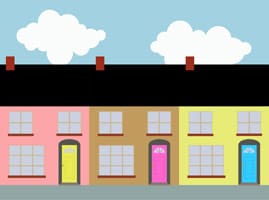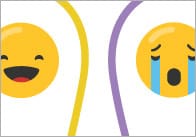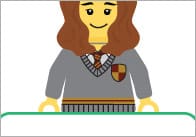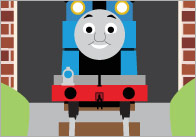One Step Beyond: Locating Numbers on a Number Track

Whilst I understand that the group Madness had no part in naming English number words and spellings, I think the people that did must have been touched by madness! This blog is one of a new series that will examine confusion that can arise with our number names.
Children first learn to say the numbers one, two and three in order. They often learn it as one string of sounds ‘onetwothree’. Due to the confusion of our English language, this could be easily be interpreted as ‘one to three’. We then introduce numbers four and five. Again children may associate ‘four’ with ‘go for a walk’ and therefore not make such sense out of this new sound for a number.
We have to encourage children to break up the string of sounds to enable them count objects allocating a number word to each object. Researchers have shown that children have an innate understanding that numbers are ordered and that the order never changes. Young children may create their own sequence chanting random numbers 1, 2, 5, 9 maybe to copy the teacher or an older sibling. Some use the same string of numbers regularly, for example 1, 2, 3, 5 not noticing that they are missing out a number in between.
But when they are introduced to four how do they know that this is the next step in our number sequence unless they regularly see a number track.
We need to emphasise that four sits to the right of number three and if we were taking strides to ‘walk’ our numbers in order, four comes after three and that three comes before four. Many Year 2 children are unable to locate a number that comes before a given number.
Children enjoy playing a game called ‘Who Lives Next Door?’ using an image of three houses with front doors. A child is asked to put a numeral on one of the front doors. For example he may choose to write 3 on the pink door. Children have to work out ‘Who Lives Next Door’ and offer to write their number on the correct door. They have to explain why. “4 lives next door to 3 because it is one more than three.” “Two comes before 3 so this must be the yellow door.”
Children cope well with finding the number that comes after the middle number but have to think harder about numbers that come before. They need to associate each position with adding or subtracting one. Try this with a child of different ages using different numbers. Older children struggle with 100 or 3001 on the right.
Barbara Carr is an independent numeracy consultant. She draws from a range of teaching experiences in primary, middle and secondary schools spanning 25 years. For more information please visit her website
.
Comments
Leave a Reply
Popular Teaching Resources
Stay Up To Date
Sign up for our newsletter and we’ll let you know when we create new early years resources.






I completely agree with everything your saying here and I will be trying out the number neighbours today. Thank you!